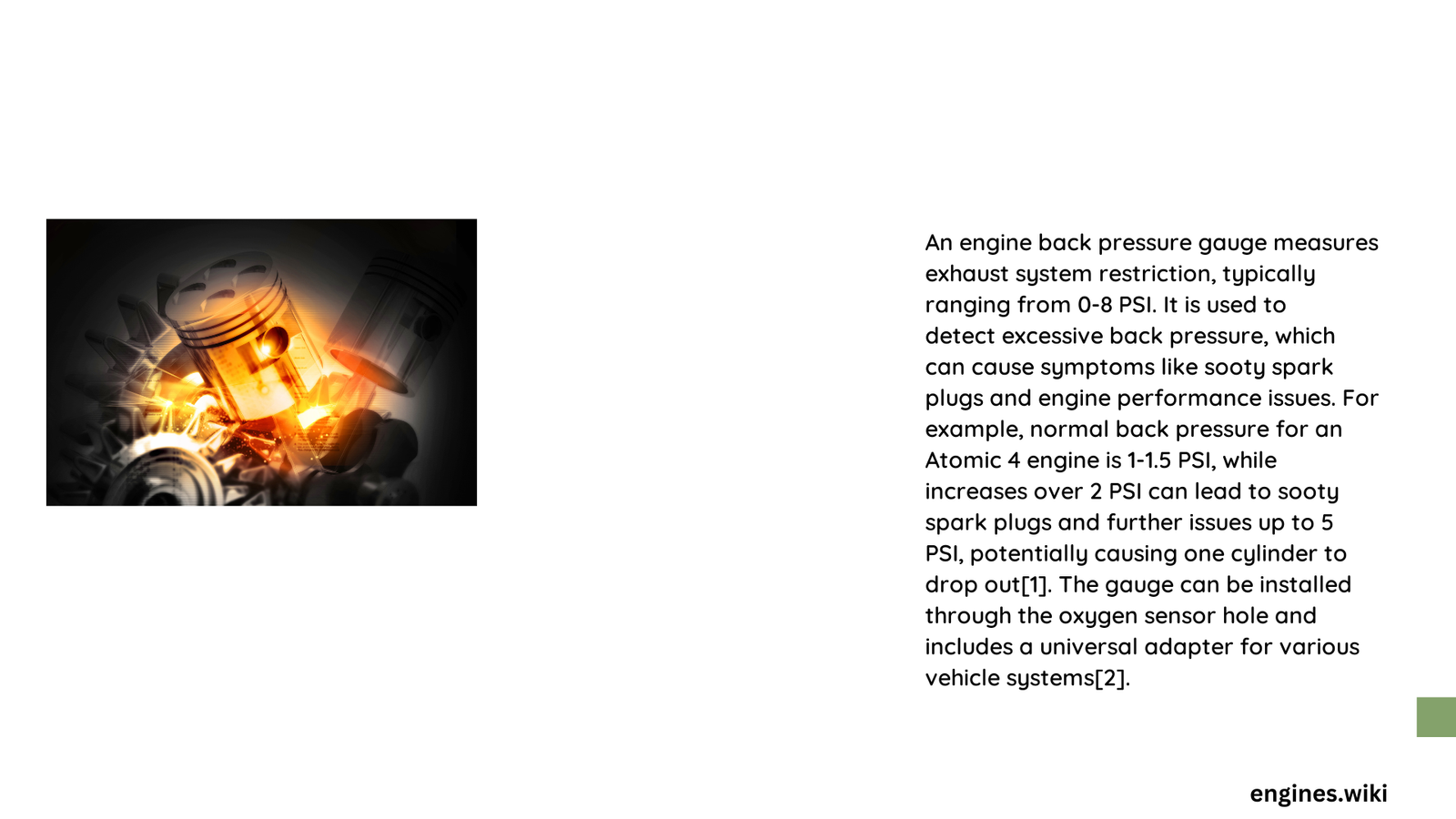An engine back pressure gauge is a critical diagnostic tool that measures exhaust system restriction by monitoring pressure within the exhaust manifold or pipe. This precision instrument helps mechanics and automotive enthusiasts identify potential performance limitations, detect blockages, and assess overall exhaust system health through accurate pressure measurements across different engine operating conditions.
What is an Engine Back Pressure Gauge?
An engine back pressure gauge is a specialized diagnostic instrument designed to measure the resistance encountered by exhaust gases as they exit an internal combustion engine. By quantifying exhaust system restrictions, this tool provides valuable insights into engine performance and potential mechanical issues.
Why Measure Exhaust Back Pressure?

Performance Implications
- Detect Exhaust Restrictions: Identify potential blockages in catalytic converters, mufflers, or exhaust pipes
- Assess Engine Efficiency: Understand how exhaust system design impacts overall engine performance
- Preventive Maintenance: Diagnose potential problems before they cause significant engine damage
How to Select the Right Engine Back Pressure Gauge?
Gauge Selection Criteria
| Feature | Recommended Specification |
|---|---|
| Pressure Range | 0-20 PSI |
| Gauge Type | Mechanical or Digital |
| Temperature Resistance | High-temperature rated |
| Accuracy | ±0.5 PSI |
Installation Process for Engine Back Pressure Gauge
Required Tools
- Pressure gauge (0-20 PSI range)
- Spark plug defouler
- High-temperature hose
- Drill bits and taps
- Wrenches
- Anti-seize compound
Step-by-Step Installation
- Locate Measurement Point
- Choose exhaust manifold or pipe before catalytic converter
-
Ensure clean, accessible location
-
Prepare Installation Site
- Mark precise drilling location
- Use cutting oil during drilling
-
Clean metal shavings thoroughly
-
Install Fittings
- Apply anti-seize compound to threads
- Secure compression fittings
- Route sensor harness carefully
Interpreting Back Pressure Readings
Acceptable Pressure Ranges
- Idle Condition: ≤1 PSI
- 2500 RPM: ≤1.5 PSI
- Maximum Acceptable: 3 PSI at steady 3000 RPM
Common Troubleshooting Techniques
Potential Diagnostic Scenarios
- High Pressure Readings
- Check for exhaust system blockages
- Inspect catalytic converter
-
Evaluate muffler condition
-
Inconsistent Measurements
- Verify gauge installation
- Check for system leaks
- Ensure proper sensor connection
Maintenance and Care
Gauge Preservation Tips
- Store in temperature-controlled environment
- Protect from physical damage
- Calibrate periodically
- Clean connections regularly
Advanced Diagnostic Considerations
Factors Affecting Measurements
- Engine temperature
- Ambient conditions
- Sensor placement
- Exhaust system configuration
Conclusion
An engine back pressure gauge represents a sophisticated diagnostic tool enabling precise evaluation of exhaust system performance. Proper understanding, installation, and interpretation of measurements can significantly enhance vehicle maintenance strategies.
